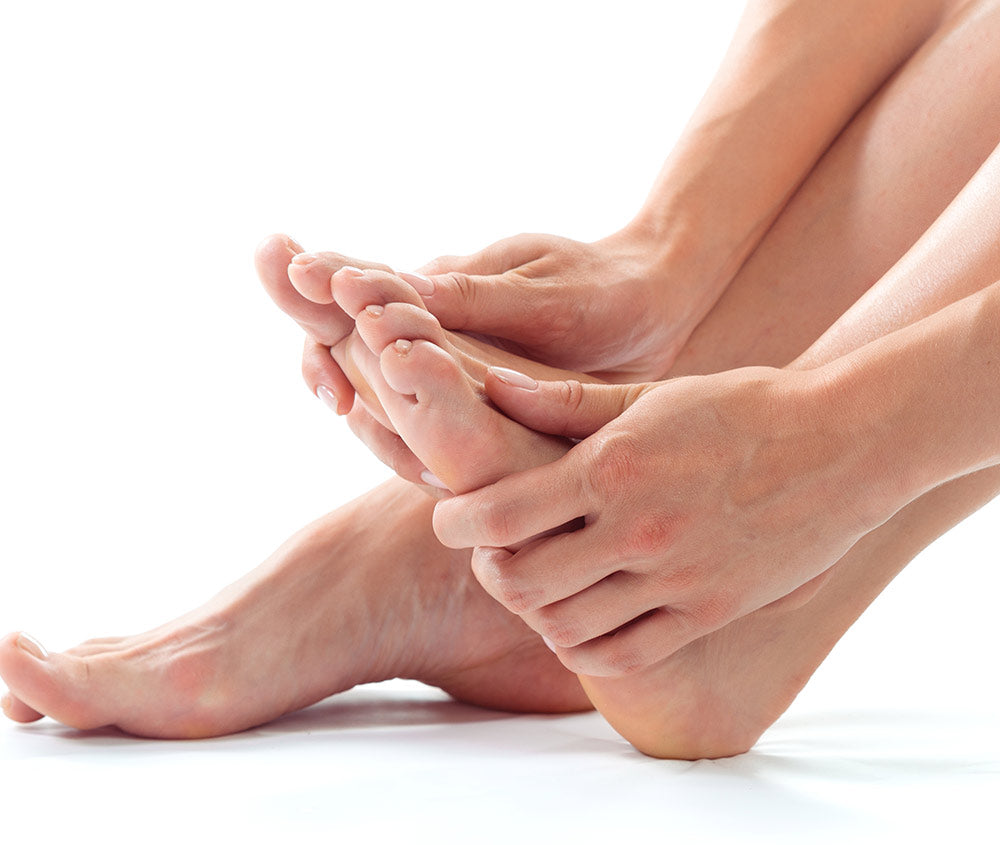There’s nothing like a good pedicure. Breathe in, breathe out, unwind. But if you’ve ever asked yourself “Why are my toenails so thick?” it’s possible you’re dealing with onychauxis, which makes getting an actual pedicure that much more difficult. Although the thickened toenail condition is often associated with advanced age, it’s worth recognizing the symptoms, causes, and treatments of onychauxis and just how it can affect your toenails.
Why Are My Toenails So Thick?
Formally known as “localized hypertrophy of the nail plate,” onychauxis is more familiarly known as when your toenails are too thick. One study from 2011 explains it as a “loss of nail plate translucency, discoloration, and subungual hyperkeratosis.”
Yes, that is a lot of clinical terminology. Subungual hyperkeratosis, for example, is when a chalky substance builds up under the toenails. The nail might become raised and tender, especially if you press on it. If this happens in your toenails, it might be uncomfortable to wear shoes because of the pressure.
You may see color change, shape change, and an infamous chalky substance that comes along with thicker toenails with a likely case of onychauxis. And despite potential pain and aesthetic distaste, know that the medical condition is treatable.
Which is why you must seek medical advice from your dermatologist or podiatrist ASAP. Left untreated, nails can curl or change to a more dramatic shade of red or black. In general, don’t let a black nail go untreated, as a simple black spot on the nail could potentially be a red flag for something much more serious, such as melanoma.
Who Is at Risk for Onychauxis?
Primarily, advanced age is responsible for why those toenails are so thick with a diagnosis of onychauxis. After all, the body ages with time — as does its ability to prevent certain medical conditions. One of those being that nails just get thicker as we age.
Another risk factor? Psoriasis, the itchy, uncomfortable inflammatory autoimmune condition that causes thick patches of scaly skin. It’s approximated that more than half of people with psoriasis will experience nail psoriasis, too, in which toenails grow thicker and become brittle.
Other causes of onychauxis include hereditary causes and acute or chronic trauma. In the latter cases, pressure damage or trauma, the toenail can thicken as a means of self-protection. (Think of it like a skin callus.) And don’t think that “trauma” means a grave situation: It can include stubbed toes or wearing shoes that don’t fit well.
Fungal infections can also contribute to the risk of asking yourself, “Why has my toenail thickened?” Same with broader, full-body autoimmune conditions such as diabetes, psoriasis (not solely the arthritic kind), and poor circulation.
What Can I Do to Treat My Thick Toenails From Onychauxis?
Onychauxis can be a painful condition, but there are different ways to treat it. If you’re dealing with psoriatic arthritis, talk to your dermatologist about different over-the-counter or doctor-prescribed medication to assist with the side effects.
For those who are experiencing thickened toenails from onychauxis due to advanced age, the proper treatment is to regularly see your dermatologist or podiatrist to have regular debridement. Debridement is the removal of damaged tissue; in the case of onychauxis, it’s those thickened toenails that can press against your shoes and cause pain.
Other options to take care of onychauxis include more invasive electric drills (sound scarier than they are), nail avulsion (which is when you actually have the nail or toenail removed) and 40% or higher urea pastes. In rare, serious situations, surgical intervention may be required.
Now You Know: Why Do Toenails Get Thick?
There are no doubt more than a handful of reasons why toenails get thick, but when you start to see loss of translucency and discoloration of the nail as well, you now know you may be dealing with onychauxis. But don’t give up — those thickened nails can be managed with regular visits to your dermatologist or podiatrist.



